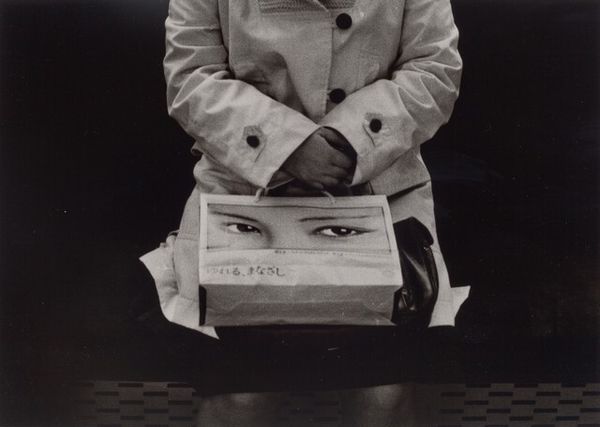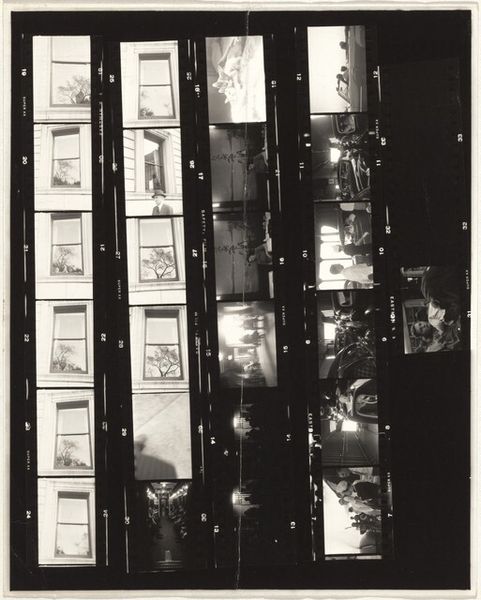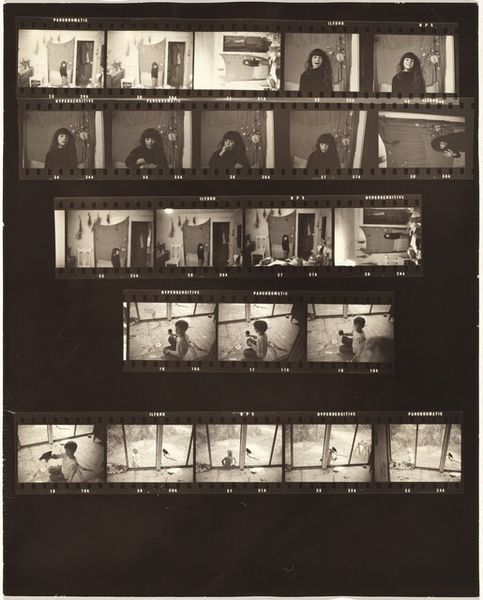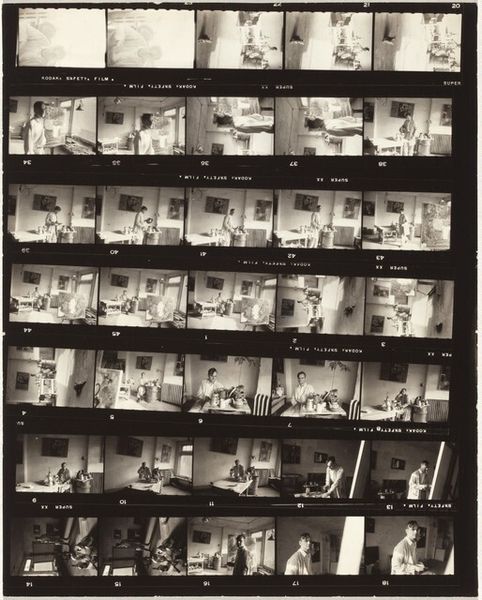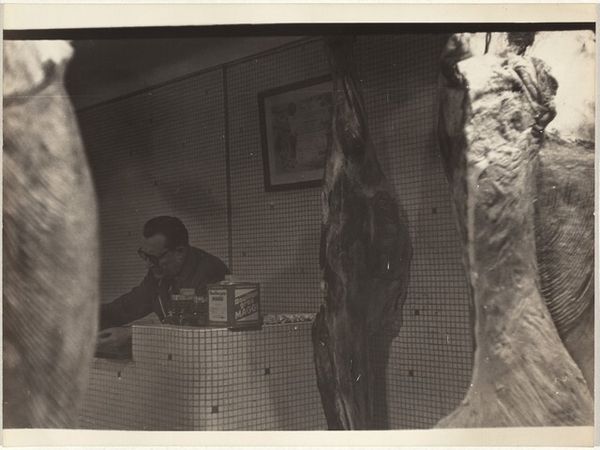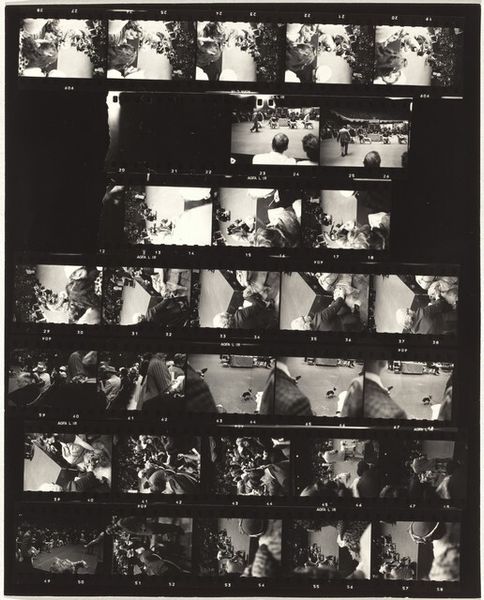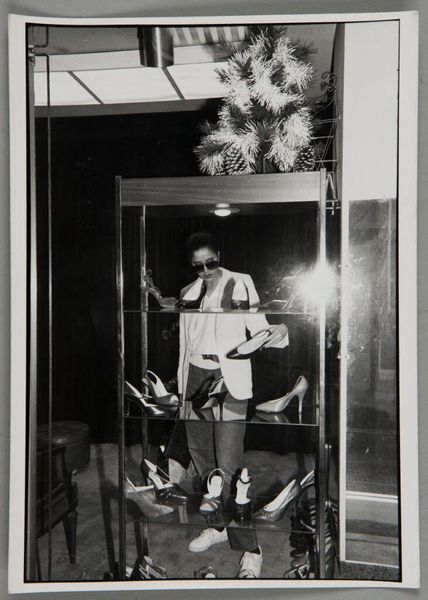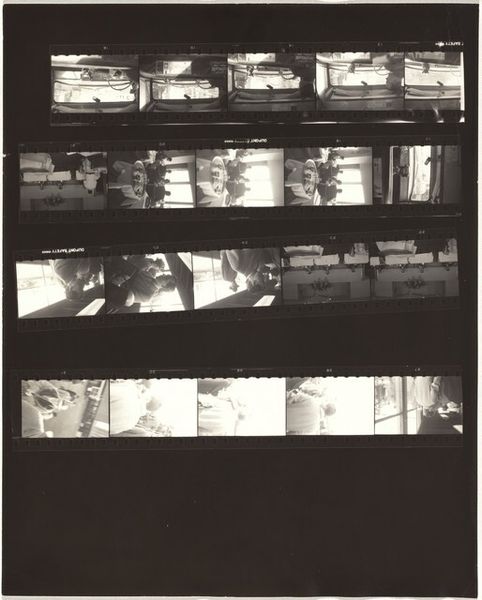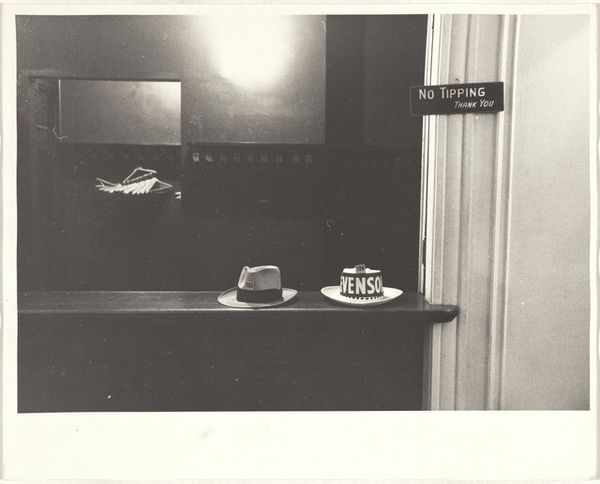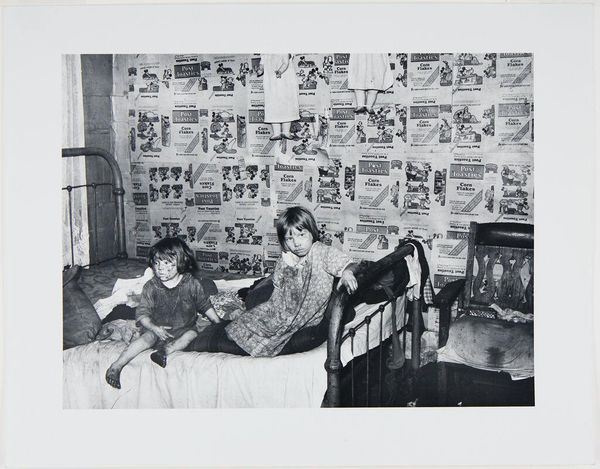
photography, installation-art
#
conceptual-art
#
appropriation
#
actionism
#
photography
#
installation-art
#
monochrome
#
monochrome
Copyright: Hans Haacke,Fair Use
Curator: Hans Haacke created this work, "MoMA Poll," in 1970. It's fascinating to consider its original context at the Museum of Modern Art, here in New York City. Editor: Wow, right away it makes me think about the act of voting—the intimacy, yet also the very public nature. There's a strong participatory energy about it. Visually, it strikes me as stark, direct... like a question hanging in the air. Curator: It very much is a question, isn't it? Specifically, "Would the fact that Governor Rockefeller has not denounced President Nixon's Indochina policy be a reason for you not to vote for him in November?" Participants could drop their ballot—clearly marked 'yes' or 'no'—into one of two transparent ballot boxes. It's using the museum space to examine politics. Editor: It’s wild to think that an artwork installed at MoMA could be so openly political. It takes a lot of courage, it feels like guerrilla art—but, well, it’s in MoMA! This is about more than denouncing Rockefeller’s politics; it’s about the institution too. Did many people participate? Curator: Exactly! The level of engagement was significant, sparking conversation, protest even! The museum director shut it down before the show ended, deeming it inappropriate. That censorship really just added to the work's resonance; the politics became impossible to ignore. Editor: Shut down, wow! But isn’t that a statement in itself? In many ways, a perfect conclusion: Proof that his point landed powerfully. I love that you can also "read" the level of engagement itself, by looking into the box—that it becomes part of the art. Curator: It really encapsulates the political climate of the era. Haacke spotlighted power dynamics within institutions and the responsibilities that individuals hold, in this case, gallery goers. And importantly, the poll asked a politically charged question right in the middle of the Vietnam War. Editor: To me, the black and white photograph also adds an undeniable gravity and tension. So little in the composition – just the poll, really – and yet the power of suggestion, the question is EVERYTHING! Thanks for helping unpack that moment in time; now I see that the simplicity is deceiving! Curator: The deceptive simplicity remains a provocative commentary today, about accountability in civic participation, both individually and at an institutional level. It remains a challenging piece!
Comments
No comments
Be the first to comment and join the conversation on the ultimate creative platform.
